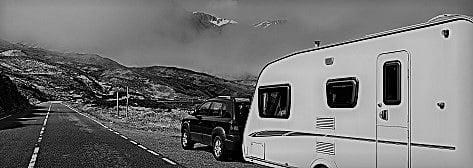Load shedding, power surges and your short-term insurance
articles
As one of the biggest insurers in South Africa, we are often asked whether our policy holders are covered for damage to electrical goods, due to a power surge related to load shedding.
Before we answer the question, lets first take a look at what a power surge is.
A power surge is basically a spike in your home's electrical current. The spike is very brief, usually lasting less than a thousandth of a second, but it can still cause damage to your home and appliances. Chances are that you have already experienced damage from such a power surge.
So, how can you protect your electrical appliances from such damage?
1. Disconnect your appliances
Monitor the Eskom load shedding time tables and ensure that you disconnect any electrical appliances before the power is disconnected. Do this, by completely unplugging them from the socket, just like you would in the case of a severe electrical storm. Importantly, only switch them on once the power has come back on. Why? Because when the power comes back on, it may do so with a momentary surge, which may damage electronically controlled appliances such as computers, television sets, DSTV decoders, etc.
- Consider investing in surge protection
If you are thinking of obtaining some sort of surge protection, it is wise to speak to a certified electrician who could give you professional advice, as there are many different types on the market, at different price levels and aimed at different needs. In addition, surge protectors on the electrical wiring/DB boards should be installed by a certified electrician.
You can purchase a surge protector for your electric mains board, as well as surge protector plug adaptors, at most leading hardware stores. If the power levels spike above a level deemed acceptable, the surge protector diverts the excess energy into its grounding wire.
The quickest and least expensive solution for protecting appliances is plugging them into a power strip with a built-in surge protector. This is a multi-plug with surge protection capabilities.
- Purchase an uninterruptible power supply (UPS)
This is a good way to protect your router, modem and access points, which means you can continue working during load shedding. It’s important to note that some UPS’s also provide a degree of isolation and surge filtering, this is mostly for internal protection.
This brings us back to our original question on whether damage to electrical goods, due to a power surge related to load shedding is covered under Auto & General’s home owners and/or home contents insurance. Let’s take a look:
- Auto & General Home Owners Insurance
Under this section power surge protection is included, up to the amount as stated on your policy schedule.
- Auto & General Home Contents Insurance (Comprehensive)
Under this section power surge protection is included, up to the amount as stated on your policy schedule.
- Auto & General Home Contents Insurance (Fire and storm only)
Under this section power surge protection is included, up to the amount as stated on your policy schedule.
Rest assured that with Auto & General you are protected, but terms and conditions do apply. If you need further information, please contact you broker directly.
Please note: This document does not replace the terms and conditions of the customer’s insurance policy. Please consult the terms and conditions of the relevant insurer. The customer is obliged at all times to provide true and accurate information to the broker and the insurer, and needs to update this information on a regular basis.
Adapted from an article by Citiq Prepaid and information on the Eskom website.



